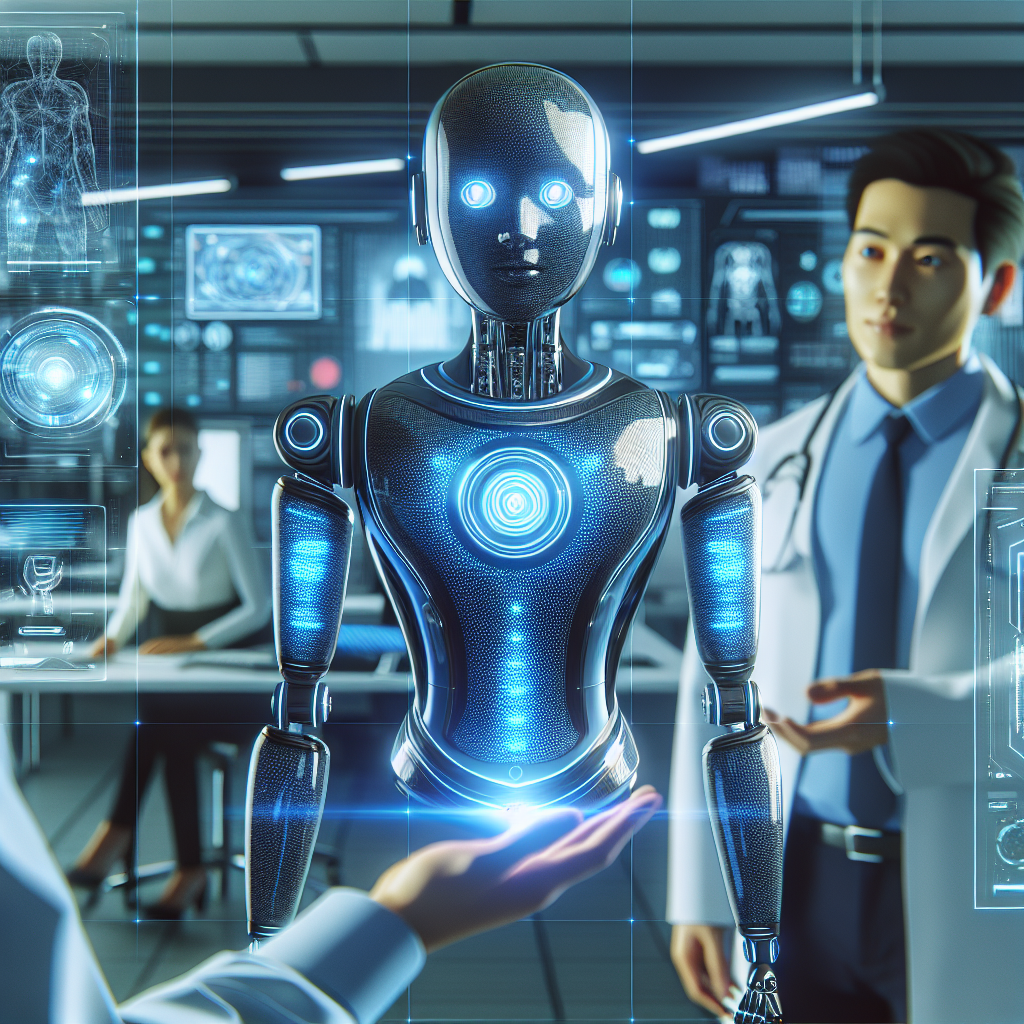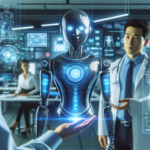Table of Contents
Introduction to ChatGPT
What is ChatGPT?
“Generative Pre-trained Transformer,” or ChatGPT for short, is a sophisticated artificial intelligence model created by OpenAI.. It represents a significant breakthrough in the field of natural language processing (NLP) and conversational AI. Built upon the Transformer architecture, ChatGPT is pre-trained on vast amounts of text data from the internet, allowing it to understand and generate human-like text responses.
With its deep learning capabilities, ChatGPT excels in understanding context, semantics, and nuances in language, enabling it to engage in conversations, answer questions, generate creative content, and perform various language-related tasks. Its versatility and adaptability make it a valuable tool for a wide range of applications, including customer service chatbots, content generation, language translation, and even educational assistance. As one of the most advanced AI models in existence, ChatGPT continues to push the boundaries of what’s possible in human-computer interaction and language understanding.

Importance of Conversational AI
Conversational AI holds immense importance in today’s digital landscape for several reasons. Firstly, it enhances user experience by providing more personalized and natural interactions with technology. Whether it’s through chatbots, virtual assistants, or voice-controlled devices, conversational AI allows users to interact with systems using their natural language, making technology more accessible and intuitive.
Secondly, conversational AI significantly improves efficiency and productivity, particularly in customer service and support. Automated chatbots equipped with conversational AI can handle routine inquiries, resolve issues, and provide assistance round the clock, freeing up human agents to focus on more complex tasks. This not only reduces response times but also lowers operational costs for businesses.
Moreover, conversational AI plays a crucial role in data collection and analysis. By engaging in conversations with users, AI systems can gather valuable insights into customer preferences, behavior patterns, and needs. This data can then be utilized to personalize marketing strategies, improve product offerings, and enhance overall customer satisfaction.
Furthermore, conversational AI has transformative potential in sectors like healthcare and education. AI-powered chatbots and virtual tutors can deliver personalized learning experiences, provide medical advice, monitor patient health remotely, and even offer emotional support.
Overall, conversational AI is not just about facilitating communication between humans and machines; it’s about revolutionizing the way we interact with technology, unlocking new possibilities for efficiency, personalization, and innovation across various domains.
Evolution of Conversational AI
Early Attempts and Limitations
In the early days of conversational AI, attempts to create chatbots and virtual assistants were characterized by simplistic rule-based systems and limited language understanding capabilities. These early attempts relied heavily on handcrafted rules and keyword matching to generate responses, resulting in rigid and often unintuitive interactions. While they could handle basic tasks and provide scripted responses, they struggled to understand context, maintain coherent conversations, and adapt to user inputs effectively.
One of the significant limitations of these early systems was their lack of scalability and generalization. Since they were built on specific rules and patterns, they often failed to handle unforeseen scenarios or understand variations in language usage. Additionally, they were unable to learn from interactions with users or update their knowledge over time, leading to stagnant performance and limited usefulness.
Another challenge was the inability to capture the nuances and complexities of human language. Early chatbots struggled with understanding ambiguous phrases, sarcasm, humor, and colloquial expressions, making interactions feel unnatural and frustrating for users. As a result, they fell short of providing the seamless and intuitive experiences that users expect from conversational interfaces.
Furthermore, the computational resources available at the time were insufficient to support the training of large-scale neural network models capable of advanced natural language understanding. This limited the sophistication and effectiveness of early conversational AI systems.
Despite these limitations, early attempts at conversational AI laid the groundwork for future advancements by highlighting the need for more robust and flexible approaches to language processing. Over time, researchers and developers addressed these challenges through innovations in machine learning algorithms, data availability, computational power, and model architectures, leading to the emergence of more capable and sophisticated conversational AI systems like ChatGPT.

Breakthroughs Leading to ChatGPT
Several breakthroughs have paved the way for the development of ChatGPT, a cutting-edge conversational AI model. One of the key advancements is the Transformer architecture, which revolutionized natural language processing (NLP) by introducing self-attention mechanisms. This innovation allowed models like ChatGPT to capture long-range dependencies in text data, enabling more effective language understanding and generation.
The idea of pre-training then fine-tuning is another important innovation. Pre-training involves training the model on vast amounts of text data, such as books, articles, and websites, to learn general language patterns and structures. This pre-trained model is then fine-tuned on specific tasks or domains, such as chatbots or question answering, to adapt its knowledge to the desired application. This approach has significantly improved the performance and versatility of AI models like ChatGPT.
Furthermore, advancements in computational power and training techniques have played a vital role in the development of ChatGPT. With the availability of powerful hardware, such as GPUs and TPUs, and innovative training algorithms, researchers have been able to train larger and more complex models like ChatGPT, resulting in improved performance and capabilities.
Additionally, the availability of large-scale text datasets, such as Common Crawl and Wikipedia, has been instrumental in training AI models like ChatGPT. These datasets provide a rich source of diverse and varied text data, allowing the model to learn from a wide range of linguistic contexts and domains.
Large-scale datasets, computational advancements, pre-training techniques, and the convergence of the Transformer architecture have all contributed to the significant advancement of conversational AI models such as ChatGPT. This has made it possible for human-machine interactions to become more organic, coherent, and contextually relevant.
Understanding ChatGPT

Architecture and Technology Behind ChatGPT
The architecture and technology behind ChatGPT are grounded in the Transformer model, a neural network architecture that has revolutionized natural language processing (NLP). At the heart of the Transformer architecture are self-attention mechanisms, which enable the model to weigh the importance of different words in a sentence contextually. This attention mechanism allows ChatGPT to capture long-range dependencies and understand the relationships between words in a given text, facilitating more effective language understanding and generation.
ChatGPT utilizes a multi-layer Transformer architecture consisting of an encoder and a decoder. During the training phase, the model is fed with vast amounts of text data from various sources, such as books, articles, and websites. By means of a procedure known as pre-training, ChatGPT acquires the ability to anticipate the subsequent word in a series by utilizing the context furnished by the antecedent words.. This pre-training phase equips ChatGPT with a strong understanding of language patterns and structures.
Following pre-training, ChatGPT can be fine-tuned on specific tasks or domains, such as chatbot interactions or question answering. Fine-tuning involves updating the parameters of the model to adapt its knowledge to the target application. This allows ChatGPT to specialize in particular tasks while retaining its broad understanding of language acquired during pre-training.
In terms of technology, ChatGPT relies on powerful hardware, such as graphics processing units (GPUs) or tensor processing units (TPUs), to train and deploy the model efficiently. These hardware accelerators enable ChatGPT to handle the computational demands of processing large amounts of text data and performing complex calculations associated with neural network training.
Additionally, ChatGPT benefits from advancements in training techniques, optimization algorithms, and parallel computing, which have contributed to its effectiveness and scalability. By leveraging these technologies, ChatGPT is able to deliver high-quality and coherent responses in real-time, making it a versatile tool for various natural language processing tasks.
Training Process and Data Sources
The training process of ChatGPT involves several key steps and relies on diverse sources of data to create a robust and versatile language model. Initially, the model is trained on a large corpus of text data collected from various sources, including books, articles, websites, and other publicly available text repositories. This dataset serves as the foundation for the model’s understanding of language patterns, semantics, and contextual relationships.
During training, the text data is tokenized and fed into the neural network architecture of ChatGPT, which typically consists of multiple layers of Transformer units. The model learns to predict the word or token that will follow it in a sequence iteratively, based on the context provided by the tokens that came before it. This process, known as autoregressive language modeling, allows ChatGPT to develop a deep understanding of natural language structures and dependencies.
The training process involves adjusting the parameters of the model, such as weights and biases, through backpropagation and gradient descent optimization techniques. This iterative optimization process aims to minimize the difference between the model’s predicted outputs and the actual ground truth tokens in the training data.
To enhance the robustness and generalization capabilities of ChatGPT, various data augmentation techniques may be employed during training. These techniques involve introducing variations, noise, or perturbations to the input data, thereby exposing the model to a more diverse range of linguistic patterns and scenarios.
In addition to the main training dataset, ChatGPT may also utilize supplementary data sources to further enhance its performance and adaptability. This could include specialized domain-specific datasets, curated corpora for specific tasks, or annotated datasets for fine-tuning on particular applications, such as customer support or conversational agents.
Overall, the training process of ChatGPT involves leveraging large-scale text data from diverse sources, combined with advanced neural network architectures and optimization techniques, to create a powerful and versatile language model capable of understanding and generating human-like text.
Applications of ChatGPT
Customer Service
ChatGPT has found widespread applications in customer service, where it can interact with users in real-time, addressing their queries and concerns with speed and accuracy.
Content Creation
Content creators are leveraging ChatGPT to streamline their workflow and generate high-quality content efficiently. Whether it’s writing articles, scripts, or marketing copy, ChatGPT can assist in brainstorming ideas and producing written material.
Personal Assistants
ChatGPT has also been integrated into personal assistant applications, providing users with a virtual companion that can schedule appointments, set reminders, and answer questions.
ChatGPT’s Impact on Society
Advantages of Conversational AI
Conversational AI offers a multitude of advantages across various domains, revolutionizing how businesses interact with customers and how individuals engage with technology. Some of the key advantages include:
- Enhanced User Experience: Conversational AI provides more natural and intuitive interactions, mimicking human conversation. This leads to improved user satisfaction and engagement, as users can communicate with systems using their own language and preferred communication style.
- 24/7 Availability: Unlike human agents, conversational AI systems can operate round the clock without fatigue or breaks. This ensures consistent and timely assistance for users, whether it’s answering inquiries, providing support, or completing transactions.
- Scalability: Conversational AI can handle a large volume of interactions simultaneously, making it highly scalable for businesses with growing customer bases. As demand increases, additional resources can be allocated to handle increased workload without significant overhead.
- Cost-Effectiveness: Implementing conversational AI can lead to cost savings for businesses by reducing the need for human customer service agents or support staff. Automated systems can handle routine inquiries and tasks, freeing up human resources for more complex and high-value activities.
- Personalization: Conversational AI systems can leverage user data and preferences to deliver personalized experiences. By understanding user context and history, these systems can tailor responses and recommendations to individual needs, increasing relevance and effectiveness.
- Efficiency: Conversational AI streamlines processes and workflows by automating repetitive tasks and standardizing interactions. This improves operational efficiency and reduces response times, leading to faster resolution of inquiries and higher productivity.
- Data Insights: Conversational AI generates valuable data insights from user interactions, including preferences, behavior patterns, and frequently asked questions. Businesses can leverage this data for market research, product development, and improving customer service strategies.
- Accessibility: Conversational AI makes technology more accessible to diverse user groups, including those with disabilities or limited technical proficiency. By offering natural language interfaces, these systems lower barriers to entry and enable broader participation in digital services.
- Innovation: Conversational AI drives innovation by enabling new ways of interacting with technology and accessing information. From voice-controlled devices to chatbots and virtual assistants, these systems continuously evolve to offer novel solutions and capabilities.
- Competitive Advantage: Businesses that adopt conversational AI early gain a competitive edge by delivering superior customer experiences, optimizing operational efficiency, and staying ahead of industry trends. As conversational AI becomes increasingly ubiquitous, staying ahead of the curve can position businesses for long-term success.
Ethical Considerations and Challenges
As conversational AI technologies like ChatGPT continue to advance, it’s essential to consider the ethical implications and challenges that arise from their widespread adoption. Some of the key ethical considerations include:
- Privacy and Data Security: Conversational AI systems often collect and process sensitive user data during interactions. Ensuring the privacy and security of this data is paramount to prevent unauthorized access, misuse, or data breaches. Transparent data handling practices and robust security measures are essential to build trust with users.
- Bias and Fairness: AI models like ChatGPT can inadvertently perpetuate biases present in the training data, leading to discriminatory or unfair outcomes. It’s crucial to address bias in data collection, algorithm design, and decision-making processes to ensure fairness and equity in AI-driven interactions.
- Transparency and Explainability: Understanding how conversational AI systems arrive at their decisions is critical for accountability and trustworthiness. Enhancing transparency and explainability in AI algorithms and models can help users understand the reasoning behind system responses and identify potential biases or errors.
- Manipulation and Misinformation: Conversational AI systems can be manipulated to spread misinformation, manipulate opinions, or engage in malicious activities. Safeguards must be in place to detect and mitigate such risks, including content moderation, fact-checking mechanisms, and user education initiatives.
- User Consent and Control: Users should have the ability to control their interactions with conversational AI systems and provide informed consent for data collection and processing. Clear communication about data usage, opt-in/opt-out mechanisms, and user-friendly privacy settings empower users to make informed decisions about their privacy and participation.
- Job Displacement and Economic Impact: The widespread adoption of conversational AI may lead to job displacement in certain sectors, particularly in customer service and support roles. Addressing the economic impact of automation, reskilling and upskilling initiatives, and social safety nets are essential to mitigate potential negative consequences for affected workers.
- Ethical Use Cases and Applications: Conversational AI should be deployed ethically and responsibly, prioritizing applications that benefit society and uphold human rights. Ethical guidelines, codes of conduct, and regulatory frameworks can help guide the development and deployment of AI technologies in alignment with ethical principles.
- Long-Term Implications: Anticipating and addressing the long-term societal, cultural, and ethical implications of conversational AI adoption is crucial. This includes considering the impact on interpersonal communication, cultural norms, human relationships, and societal trust in technology.
Navigating these ethical considerations requires collaboration among stakeholders, including researchers, developers, policymakers, businesses, civil society organizations, and users. By proactively addressing ethical challenges and upholding ethical principles, we can harness the potential of conversational AI technologies for positive social impact while mitigating potential risks and harms.
Future Prospects
Improvements in ChatGPT
As research in the field of NLP continues to advance, we can expect ChatGPT to undergo further enhancements, resulting in even more sophisticated language models capable of understanding and generating nuanced responses.
Integration into Daily Life
Looking ahead, ChatGPT and conversational AI are poised to become integral parts of our daily lives, seamlessly integrated into various applications and devices to enhance communication and productivity.
Conclusion
In conclusion, ChatGPT represents a remarkable milestone in the journey of conversational AI. With its ability to understand and generate human-like text, ChatGPT has the potential to revolutionize how we interact with technology and each other.
Unique FAQs
- How does ChatGPT differ from traditional chatbots? ChatGPT differs from traditional chatbots in its advanced language understanding capabilities, allowing it to generate more contextually relevant and coherent responses.
- Can ChatGPT learn from user interactions? Yes, ChatGPT can learn from user interactions, continually improving its responses based on the feedback it receives.
- What are some potential drawbacks of using ChatGPT? Potential drawbacks of using ChatGPT include the risk of biased or inappropriate responses and concerns about data privacy and security.
- How can businesses benefit from integrating ChatGPT into their operations? Businesses can benefit from ChatGPT by enhancing customer service, automating repetitive tasks, and generating content more efficiently.
- What measures are being taken to address ethical concerns surrounding ChatGPT? Researchers and developers are actively working to address ethical concerns surrounding ChatGPT through measures such as bias detection algorithms and transparency in AI decision-making processes.









